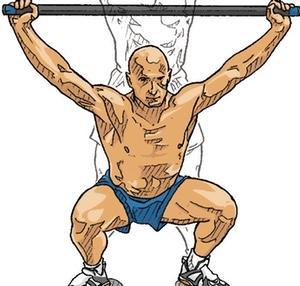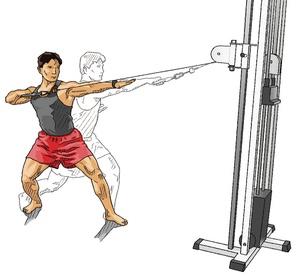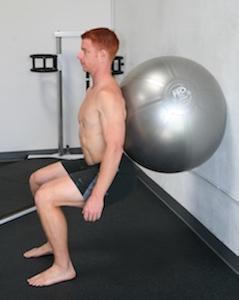Primal Pattern Movements: Overhead Squat
by Paul Chek

 Primal Pattern® movement describes the seven most important movements for optimal human functioning:
Primal Pattern® movement describes the seven most important movements for optimal human functioning:
- Push
- Pull
- Twist
- Gait (walking, jogging, running)
- Lunge
- Squat
- Bend
This week, it’s all about the squat.
Squatting is an integral part of everyone’s lifestyle! We squat to sit down, get in a car, go to the toilet and get into bed. The human physiology is designed to allow us to squat so our hands reach the floor and a flick through any National Geographic magazine will show you pictures of native people doing just that.
Advances in civilization created inventions that eliminated the need to live, eat and work from the floor and, nowadays, the seated workplace is the most common environment in developed countries. People spend all day sitting – while they eat, travel to and from work, at work, and then at home watching TV – and have lost their ability to perform a full squat.
Many people coming into a gym are afraid to “squat” as an exercise, but ask them to sit down and stand up again and most can do this with relative ease due to the security afforded by the chair or bench beneath them.
However, the inability to balance your own center of gravity over your own base of support in a squat pattern will cause you to fall over, often backward, when trying to squat. This is a particular problem in the elderly, where hip fractures secondary to falls are a major cause of injury and death.
Medial rotational instability (over-pronation) also leads to dysfunctional squat patterns as the knees buckle inwards causing excessive shear and torsion on the knee joints.
With that in mind, let’s put the squat into action with the Overhead Squat.
Overhead Squat
Starting Position: Take a comfortable stance with your feet about hip width apart and the toes turned out up to 30 degrees. You should be able to comfortably squat down and touch your fingers to the floor.
Hold a bar or dumbbells straight above your head. Inhale and draw your belly button inward.
Action: Initiate the squat from knees, not the hips, lower yourself down into a comfortable squat. Exhale through pursed lips as you stand up.
Hold your chest and head up throughout the exercise. Your knees should track in-line with your second toes. Keep the weight above your head for the entire exercise.
Suggested reps: 8-12.
Make it easier: Use your body weight or perform a wall squat with a Swiss ball.
Make it harder: Try holding a dumbbell in just one hand.
Purpose: Squatting is an integral part of everyone’s lifestyle! We squat to sit down, get in a car, go to the toilet and get into bed. Learn how to squat with good technique in the gym, and it will carry over into everyday activities.
Before you begin this Primal Pattern® program, select the best level of exercise that can be performed with the perfect technique and stop each set before your form breaks down.
Also, it’s important to perform each exercise with a moderate tempo. Suggested repetitions for each exercise are listed, but it is more important to follow the Form Principle.
And, don’t forget to talk to your health care provider before beginning a new training program.
Love and chi,
Paul
(Note: Want to learn when and how to use the squat for maximal benefit? Take our Scientific Back Training correspondence course now and save up to 40%.)
[layerslider id=”1″]


